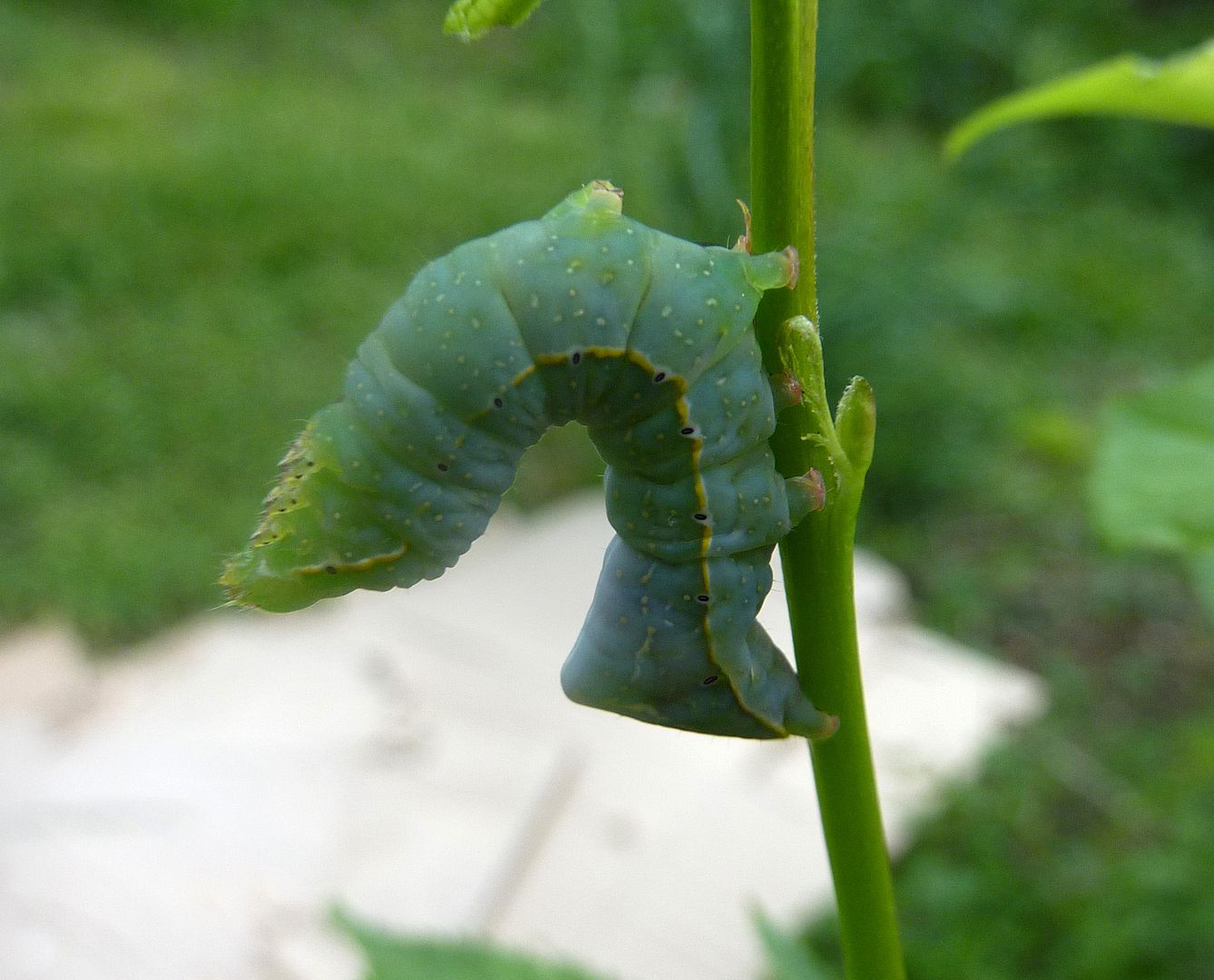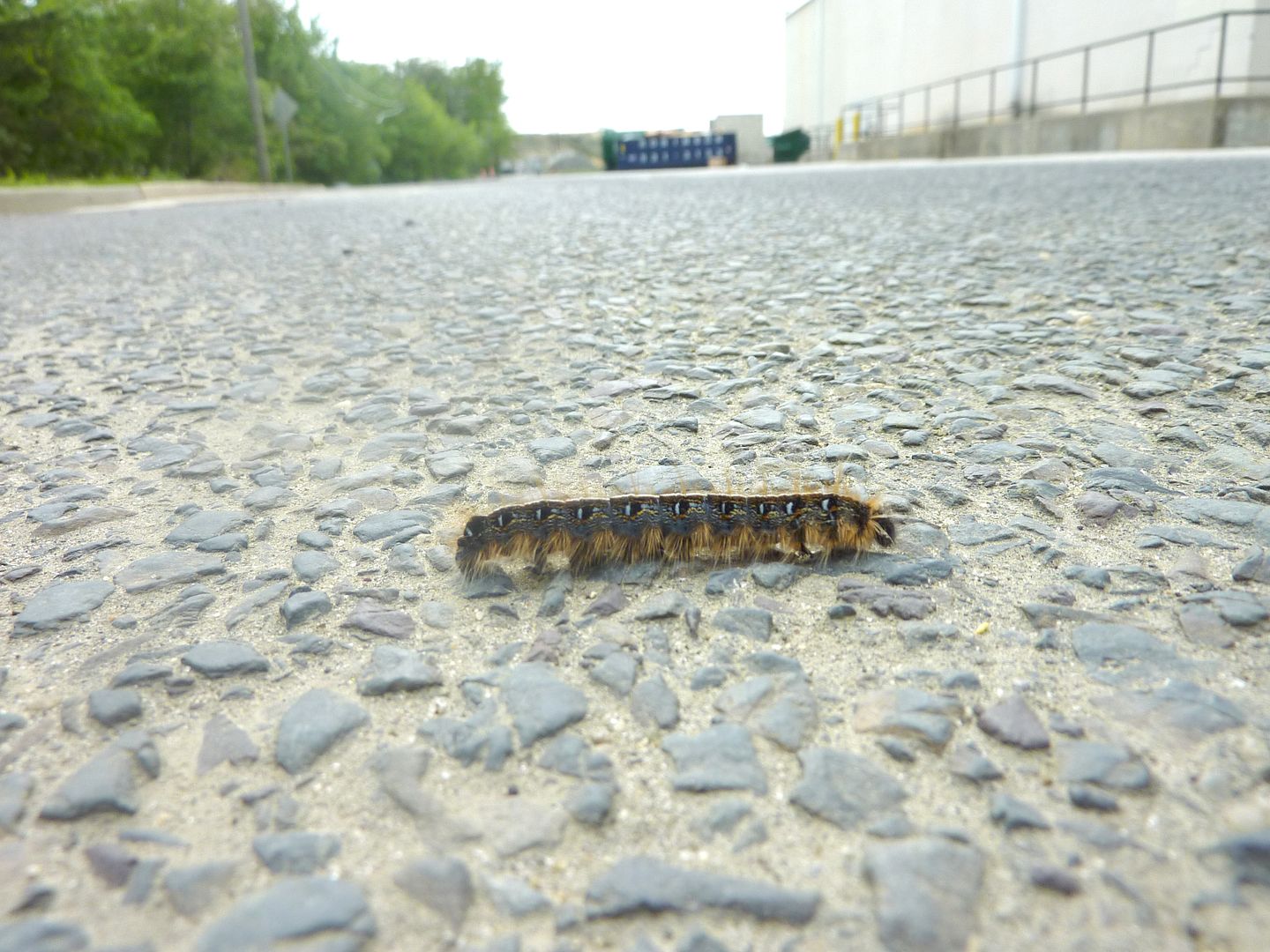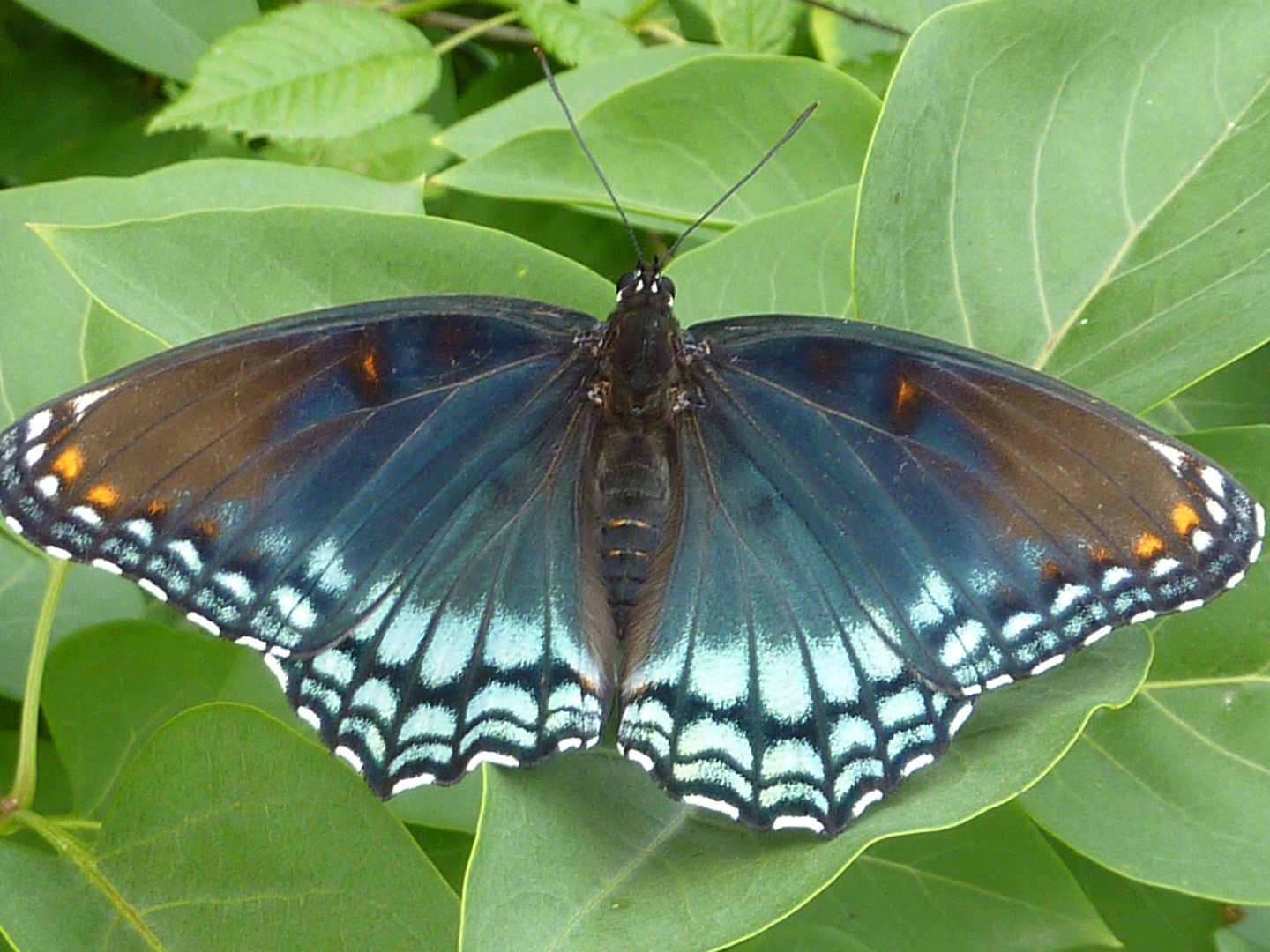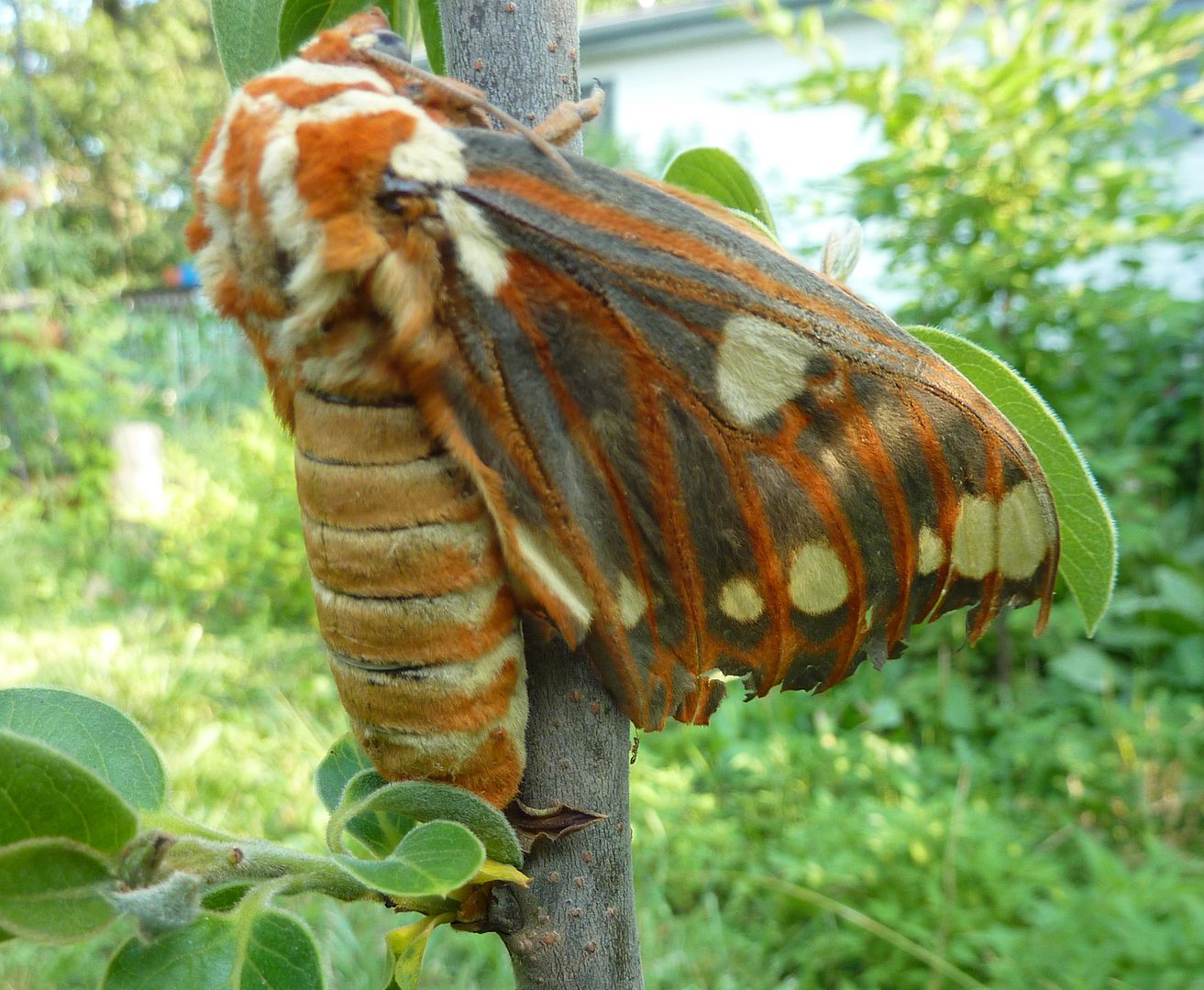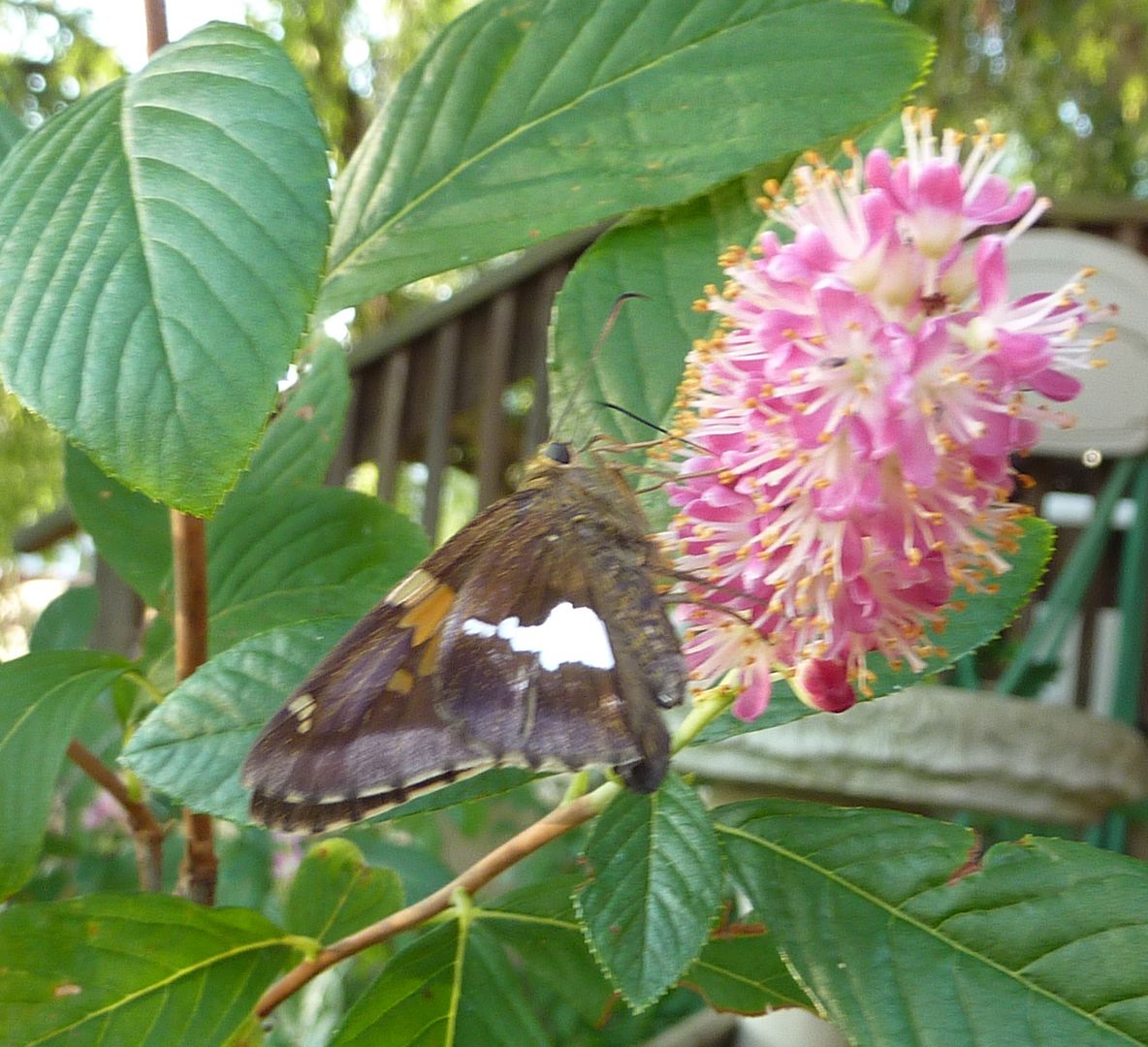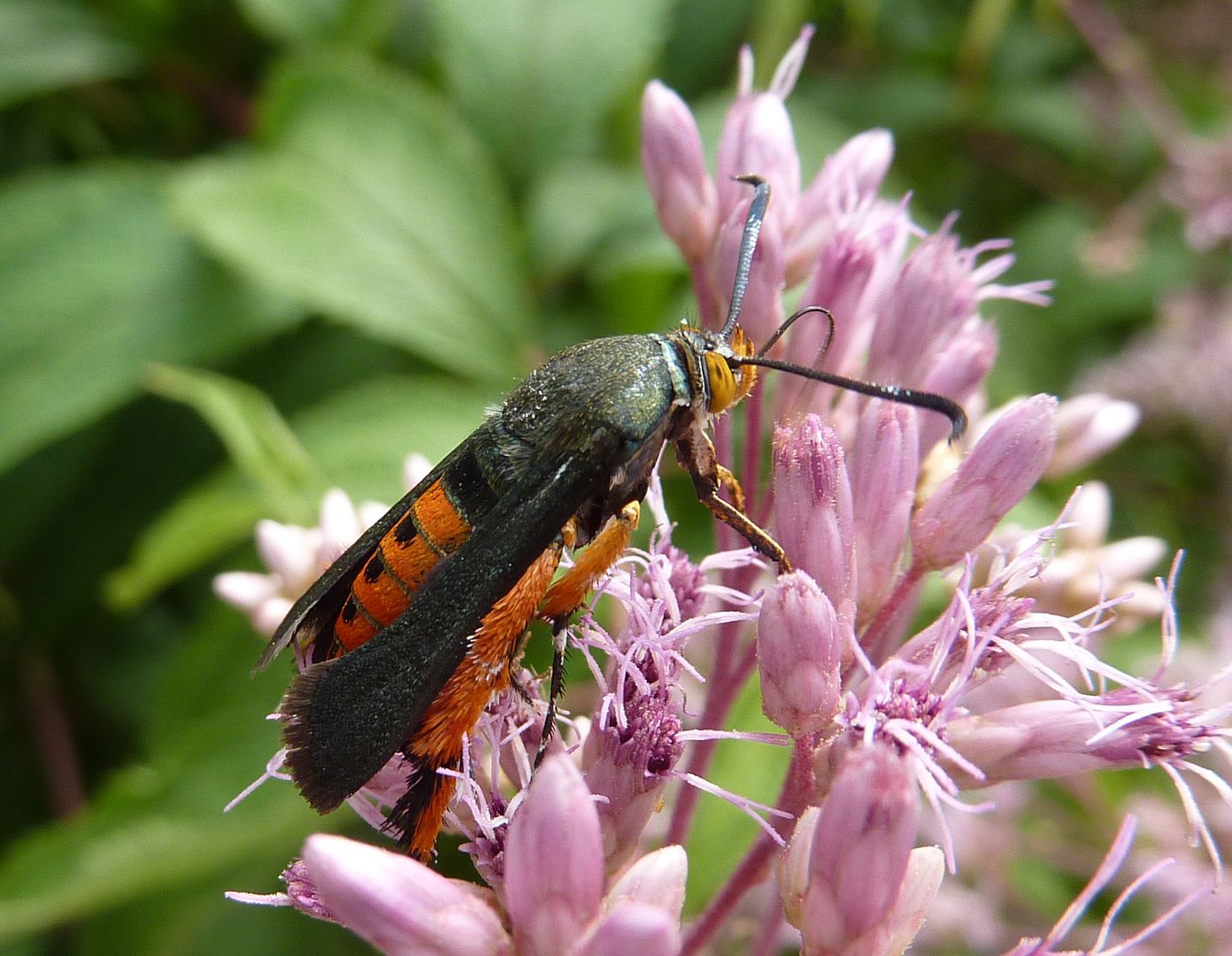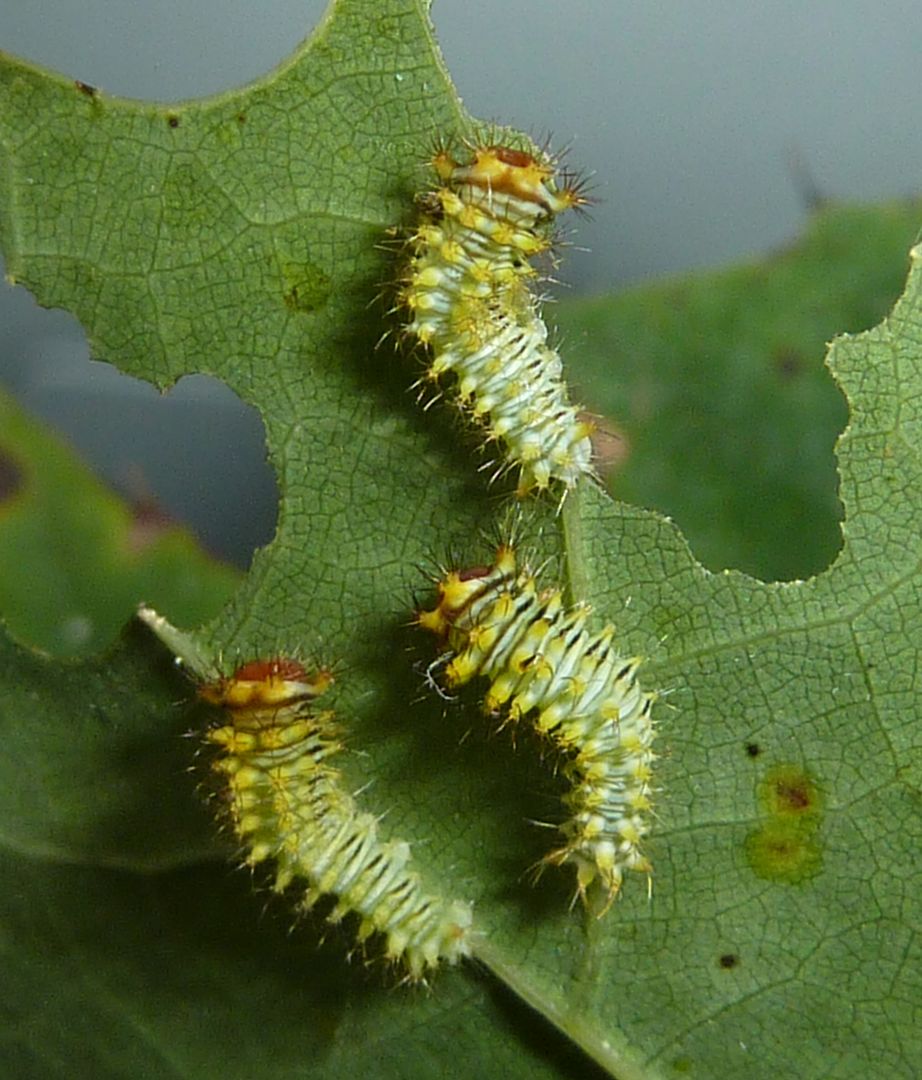 |
| (Corrected ID) American Lady, Vanessa virginiensis. |
 |
| Hawk Moth. |
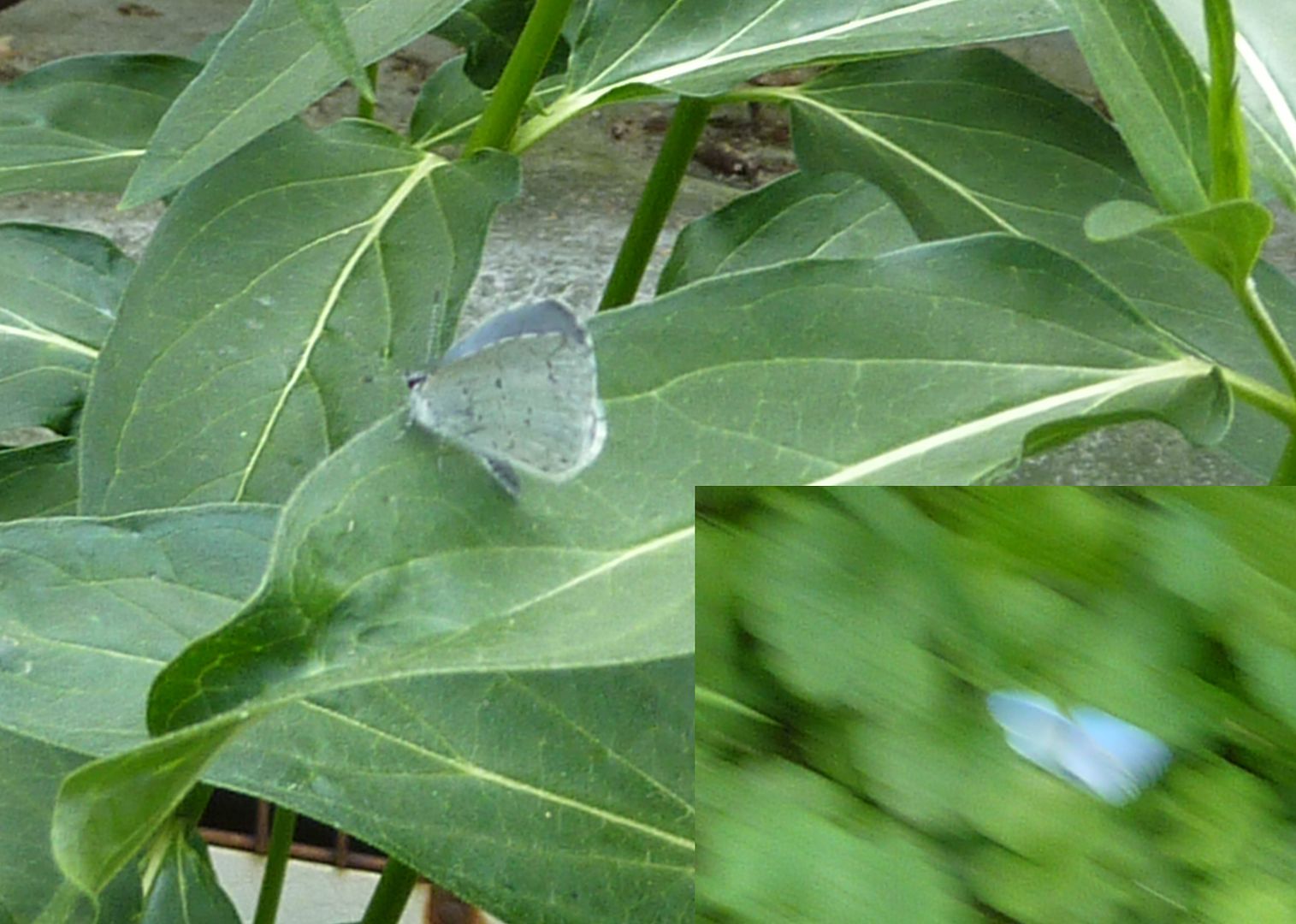 |
| Azures Butterfly. This little jewel doesn't do itself justice when sitting nicely. Upon flying and flapping it's wings the shimmering baby blue color really shines. |
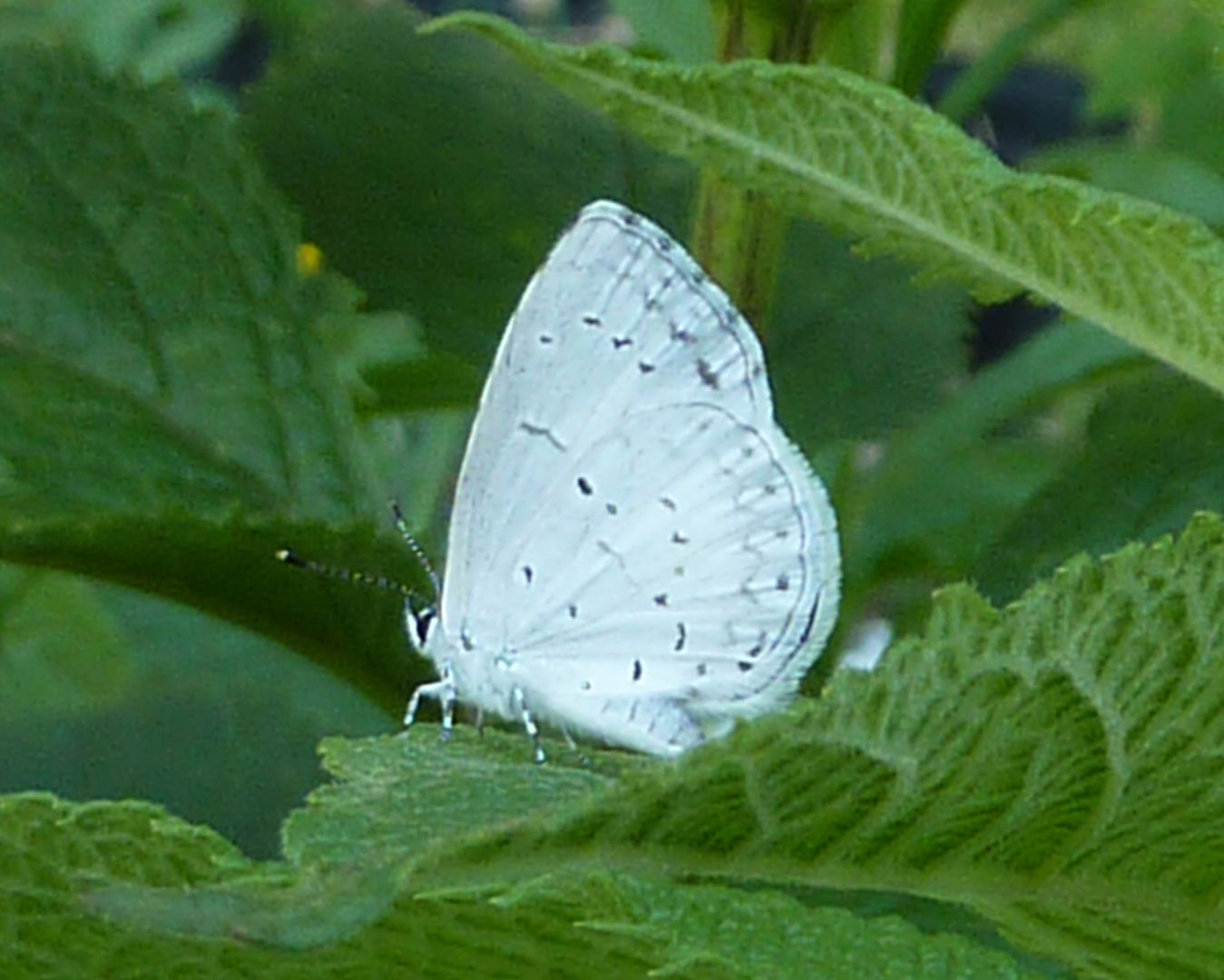 |
| A White Azures Butterfly. Related to the above. |
 |
| Red Spotted Purple. |
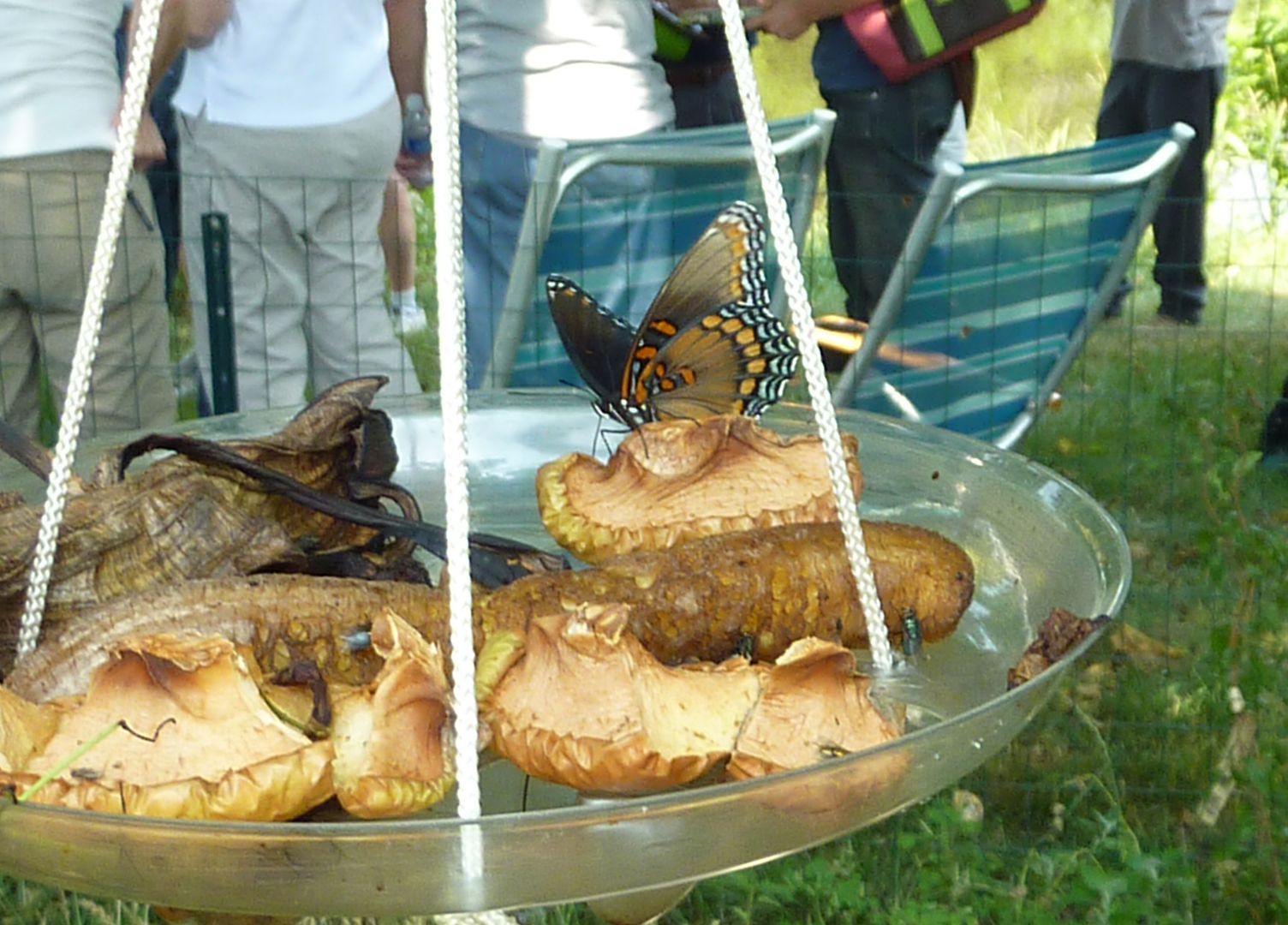 |
| Red Spotted Purple feeding on rotten fruit. |
 |
| Eastern Comma, Polygonia comma, wings open. |
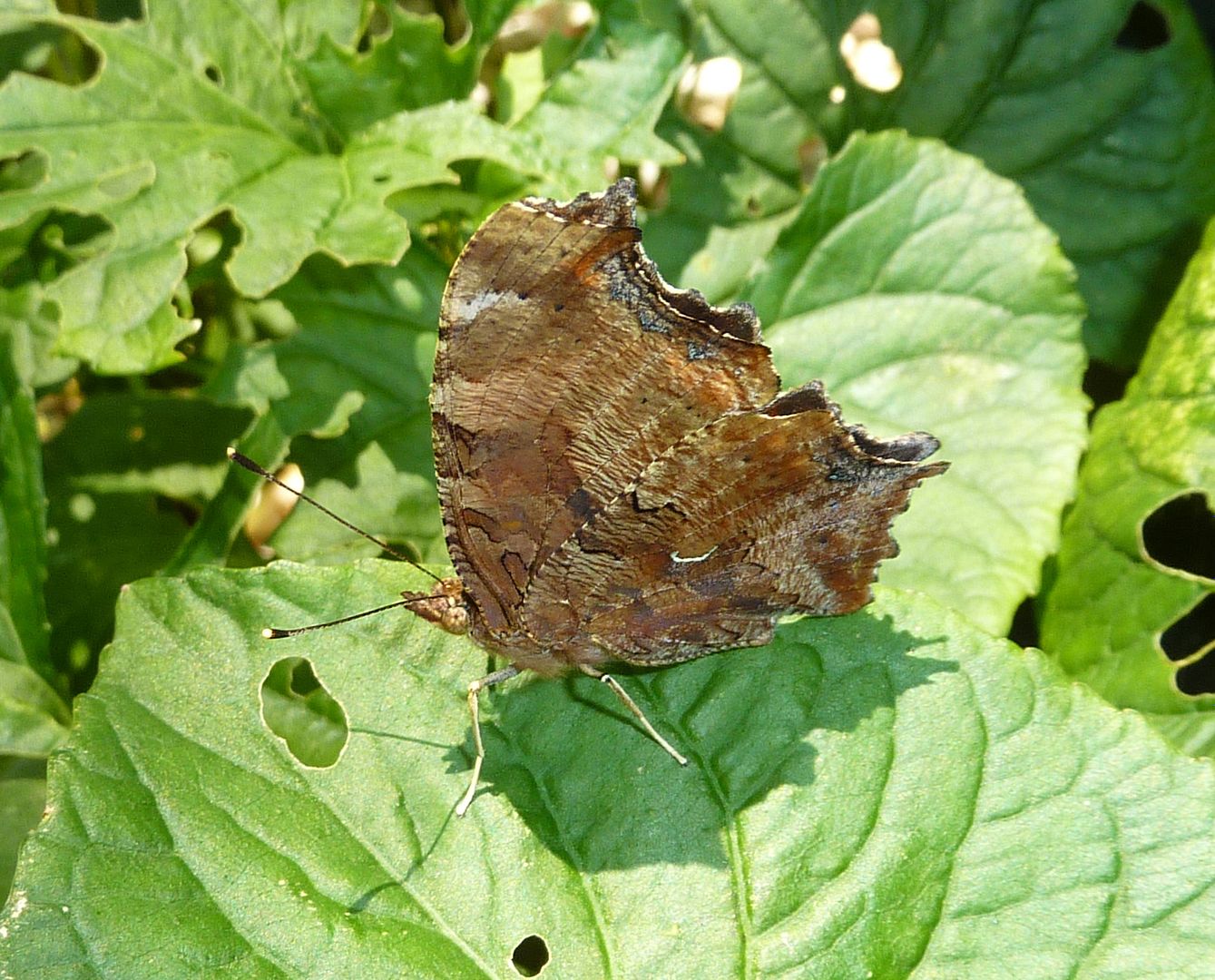 |
| Eastern Comma, Polygonia comma, with the wings closed. |
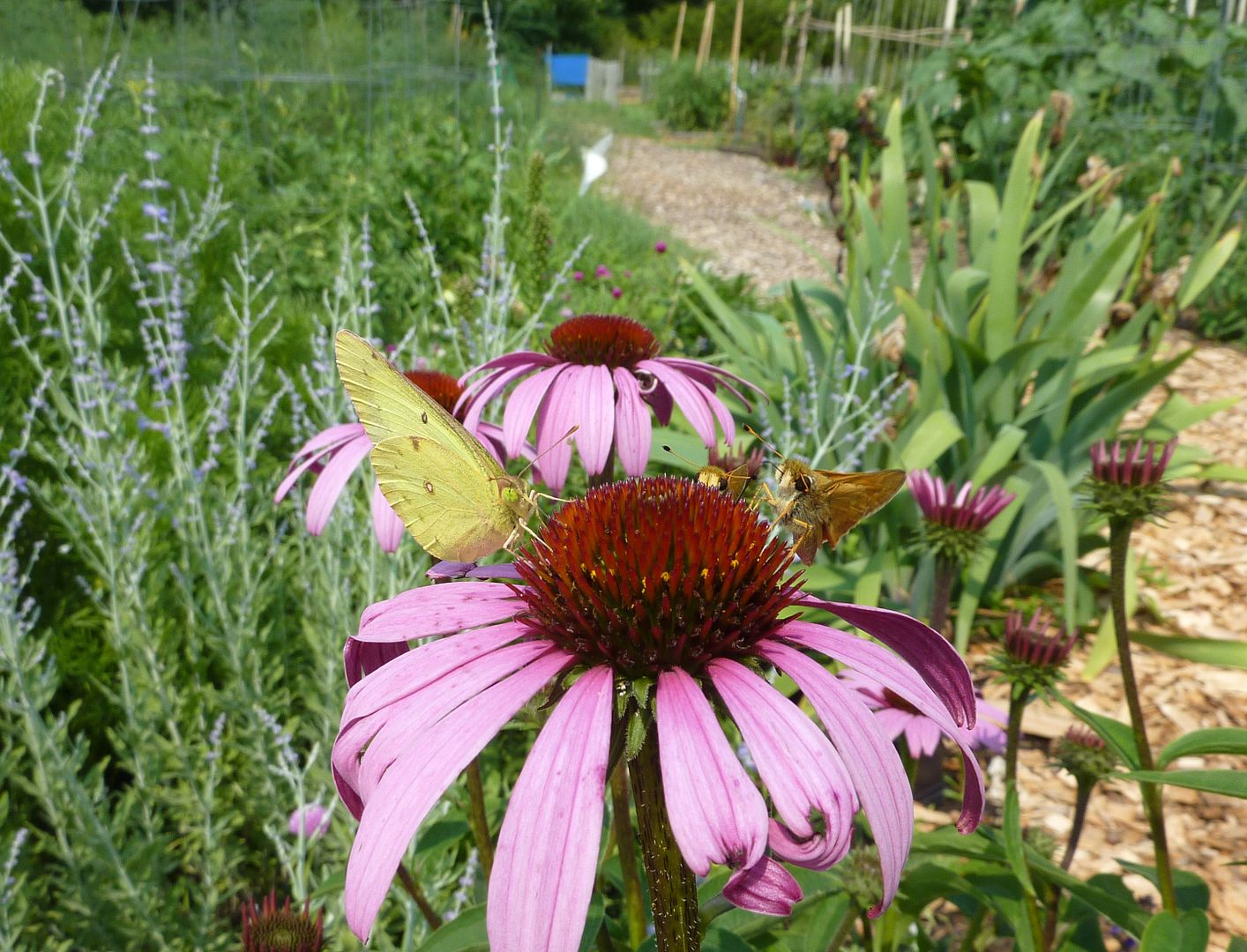 |
| Cloudless Sulphur, (I think) Phoebis sennae. Or maybe the Clouded Sulphur, Colias philodice. Anyhow a Sulphur butterfly on a purple coneflower. |
 |
| I've no idea what this is but it's another caterpillar on my native plum tree. |
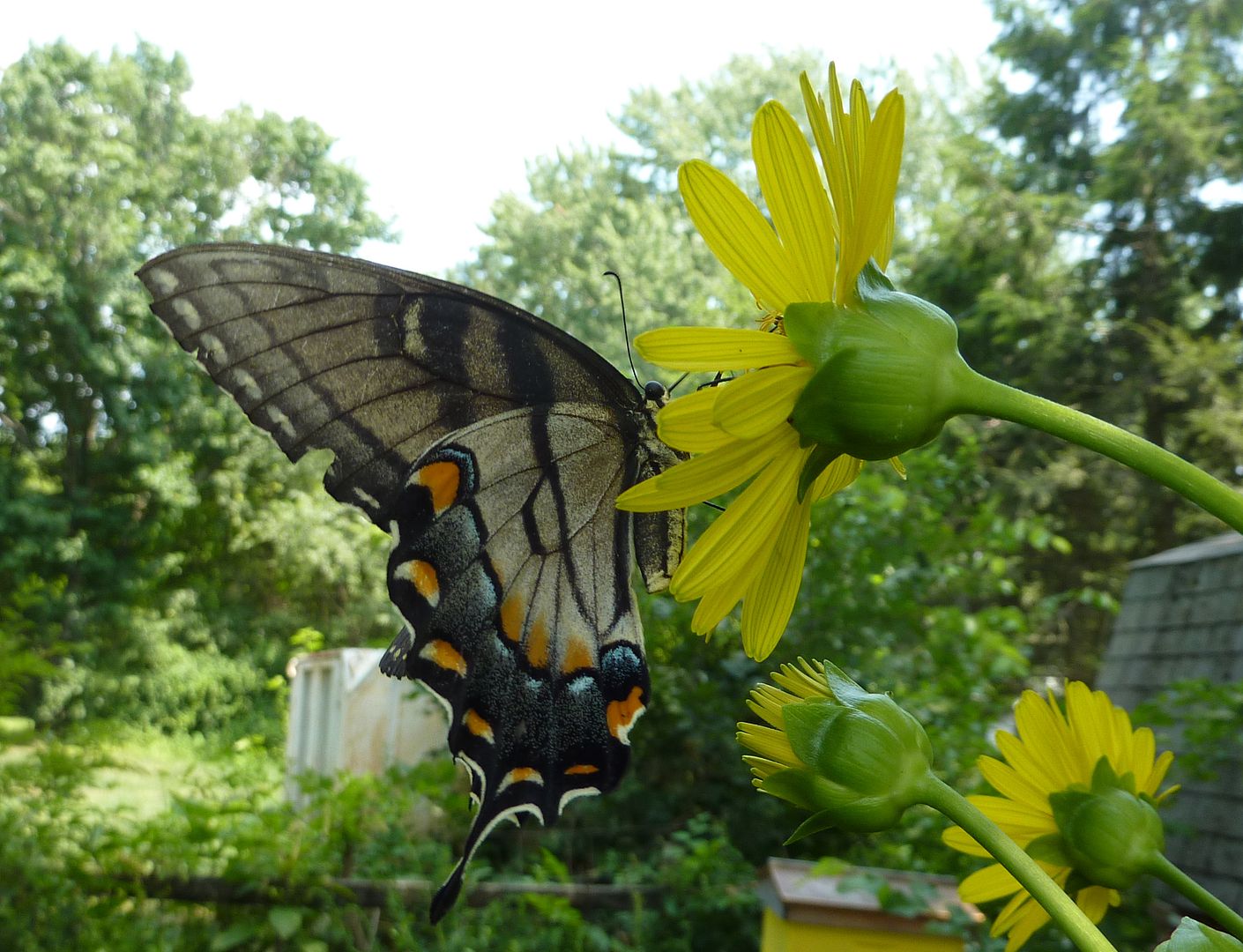 |
| Tiger Swallowtail, Papilio glaucus. |
 |
| Cabbage butterfly, Pieris rapae. I've herd this common butterfly called an invasive import. While I'm not certain on the invasive part, I am certain on the imported part. It's hard to call something invasive when it's host plant (Brassica sp.) isn't native to this continuant. |
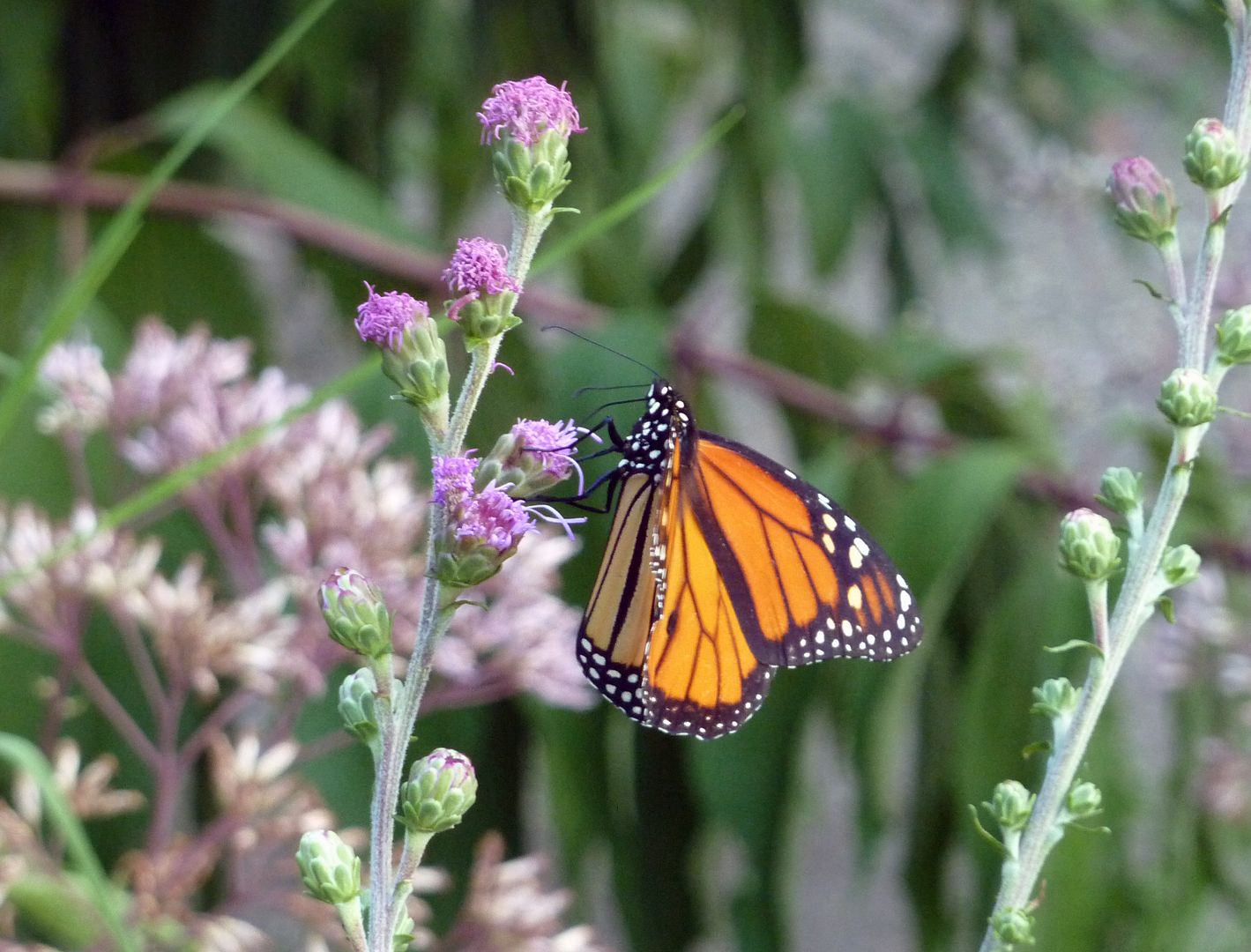 |
| Monarch Butterfly, Danaus plexippus. |
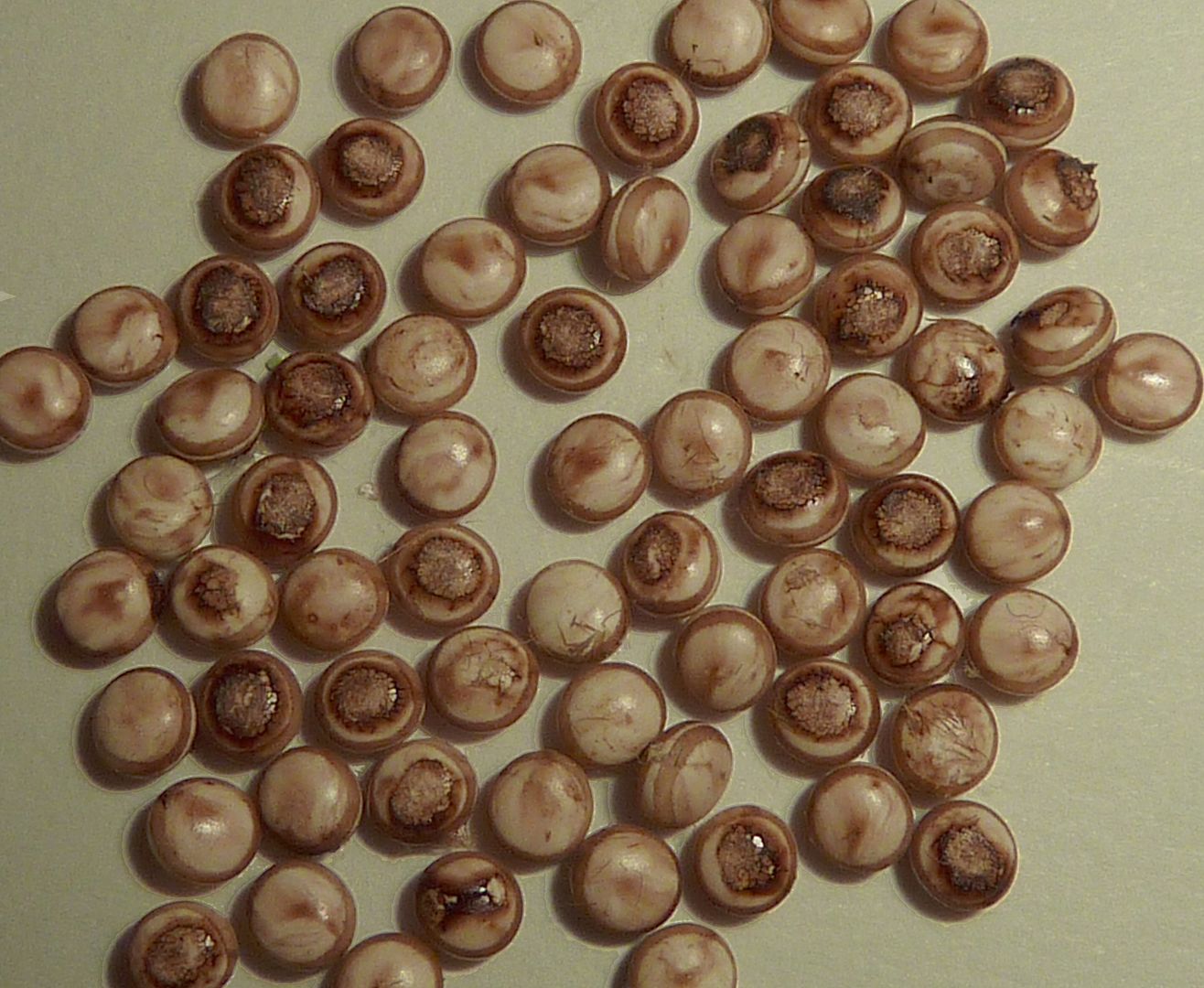 |
| Beautiful shell like Polyphemus eggs. |
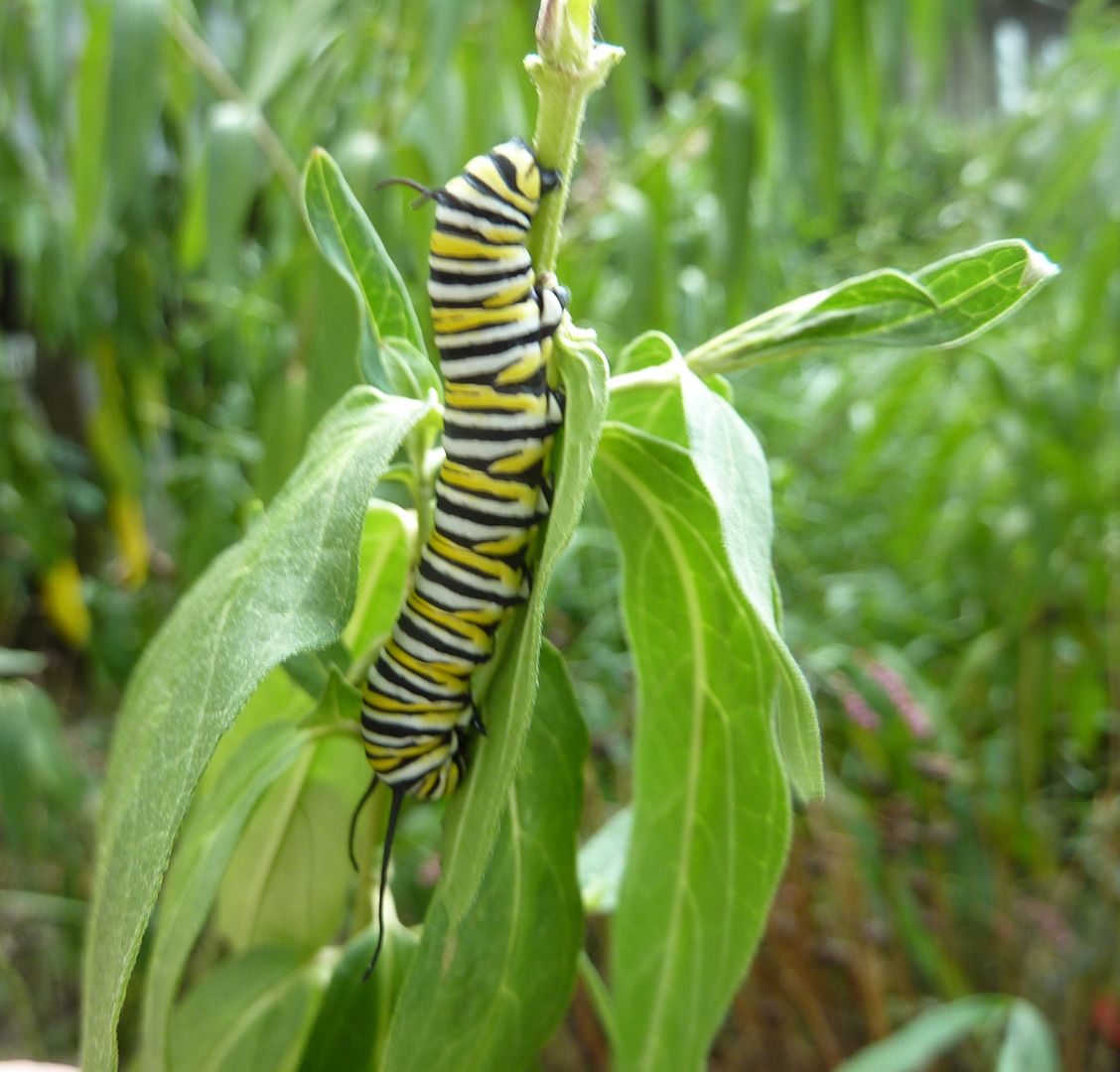 |
| Monarch Caterpillar nibbling on some Milkweed. |
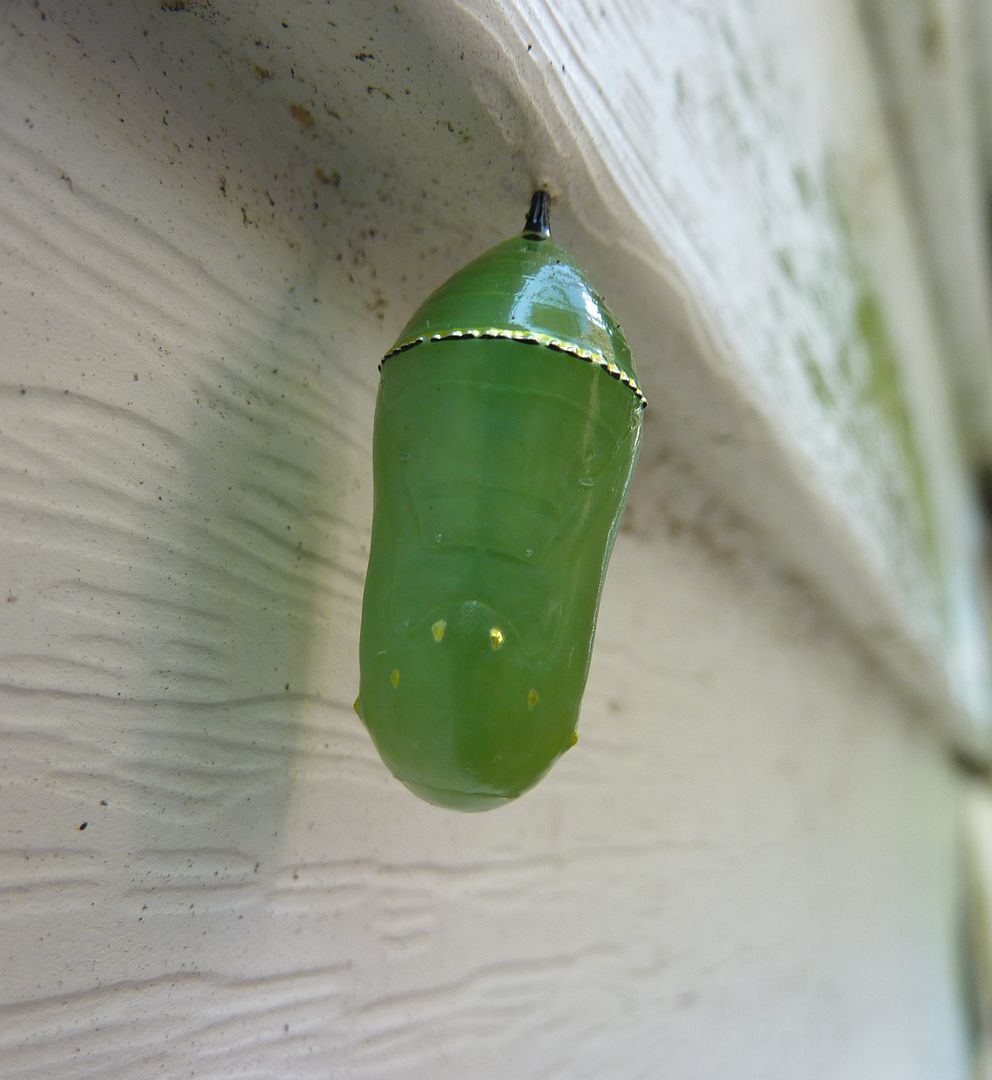 |
| Monarch Crystals |
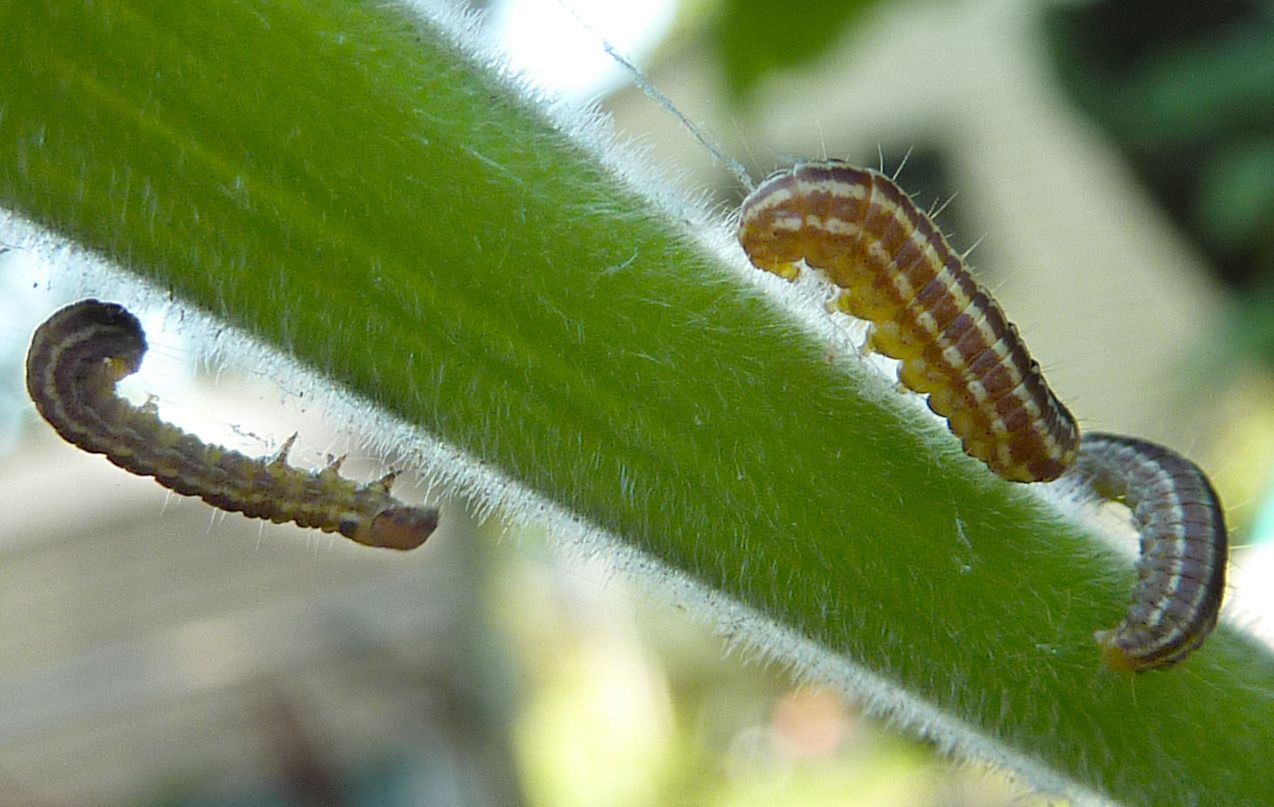 |
| Some type of caterpillar crawling out of a sunflower. |
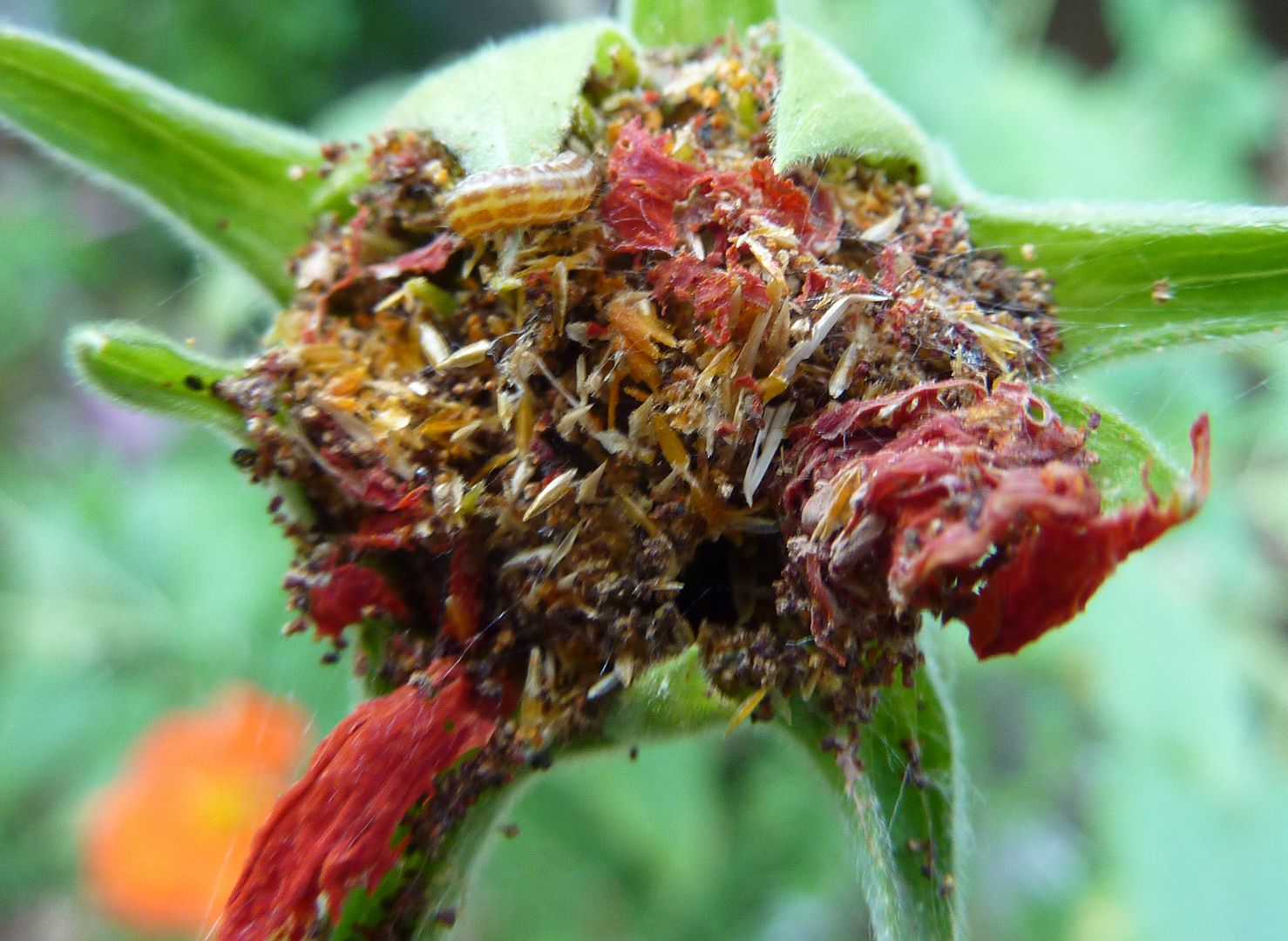 |
| Some type of caterpillar (same as above?) nibbling on a Mexican Sunflower head. What's neat is Mexican Sunflowers aren't native to most of the U.S. And yet they are the host plant to something. |
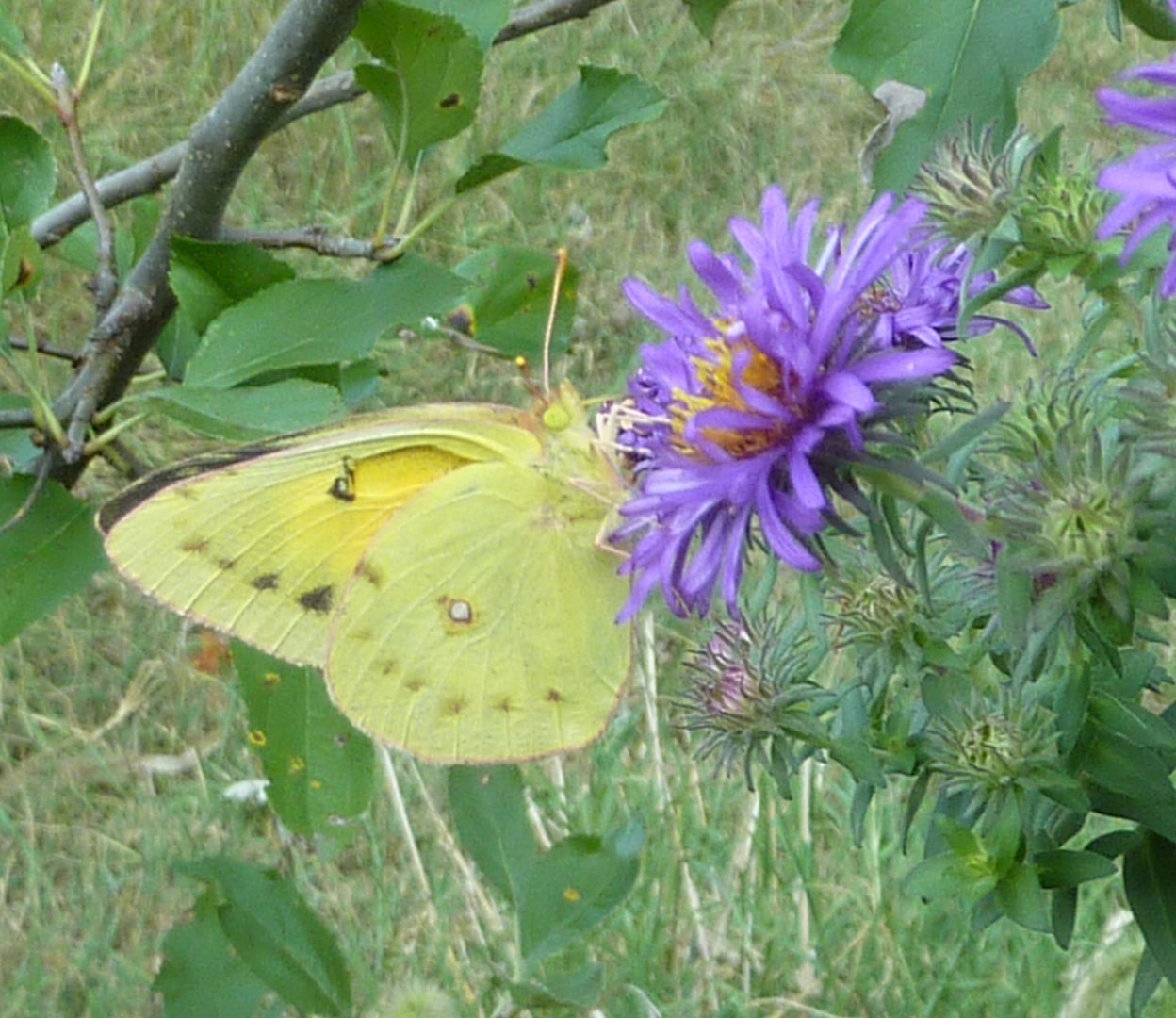 |
| Now I think this is a Clouded Sulphur, Colias philodice. |
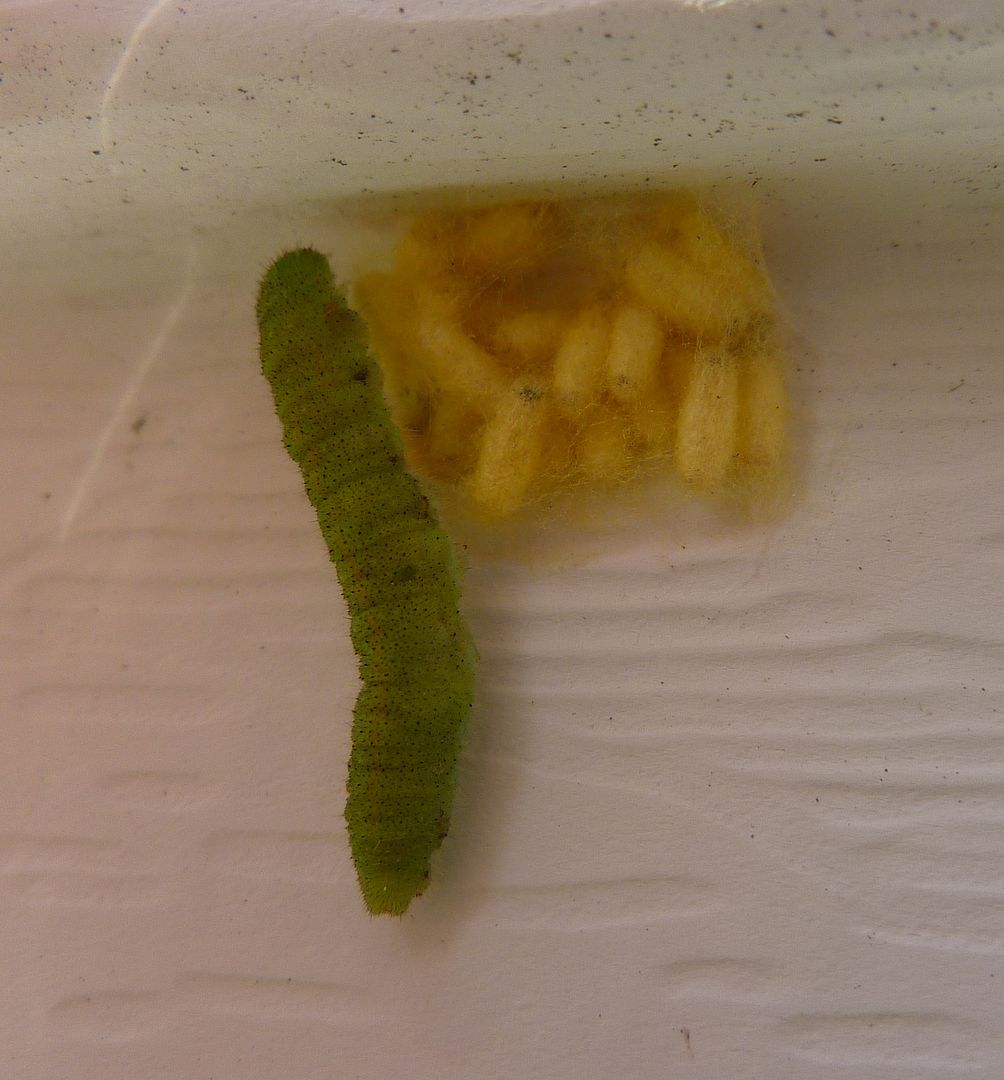 |
| Parasitized caterpillar. The inhabitants of these cocoons chewed their way out of the caterpillar's body. |
 |
| Bicolored Sallow, Sunira bicolorago. I think. |
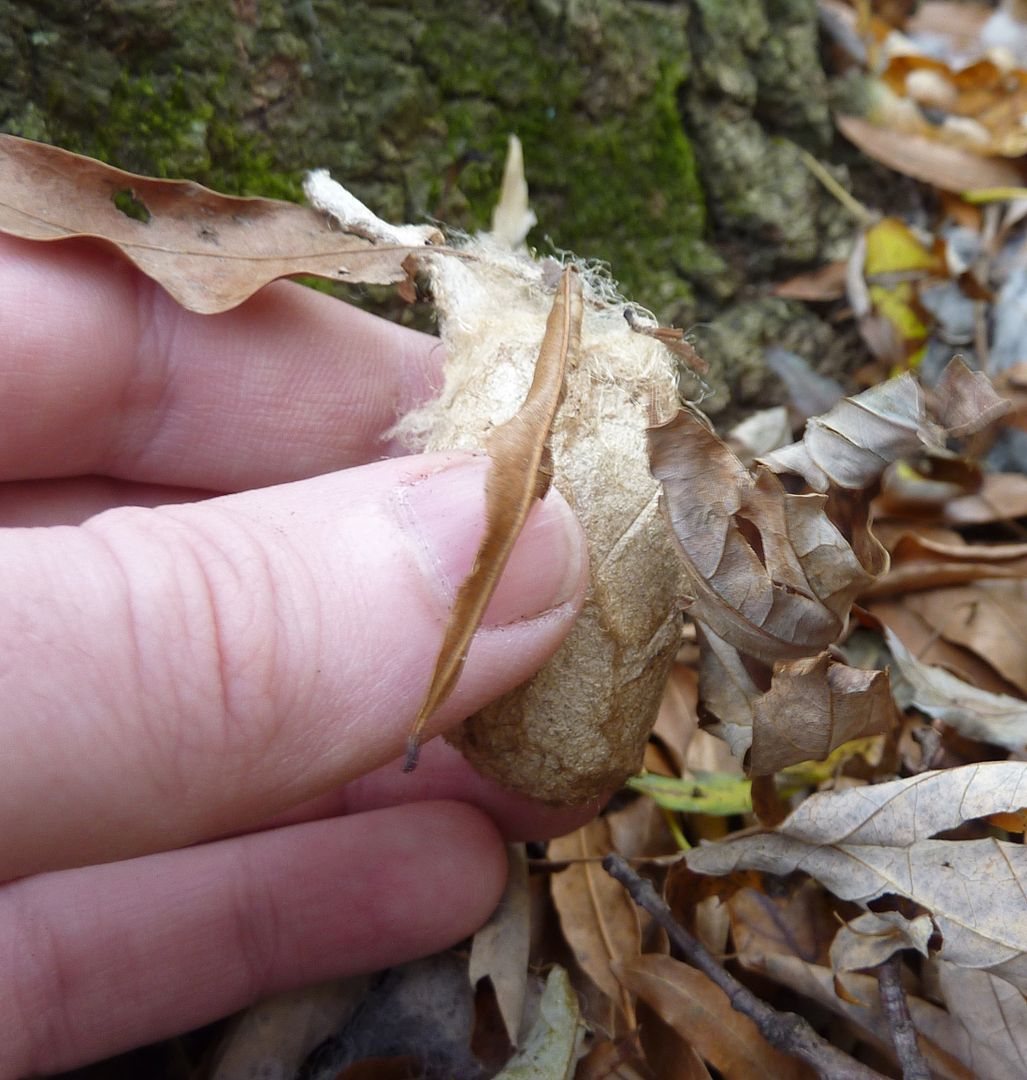 |
| Cocoon to a Polyphemus Moth. This egg shaped cocoon is as hard as a rock and really hard to see among the leaf litter to their host plants. |
